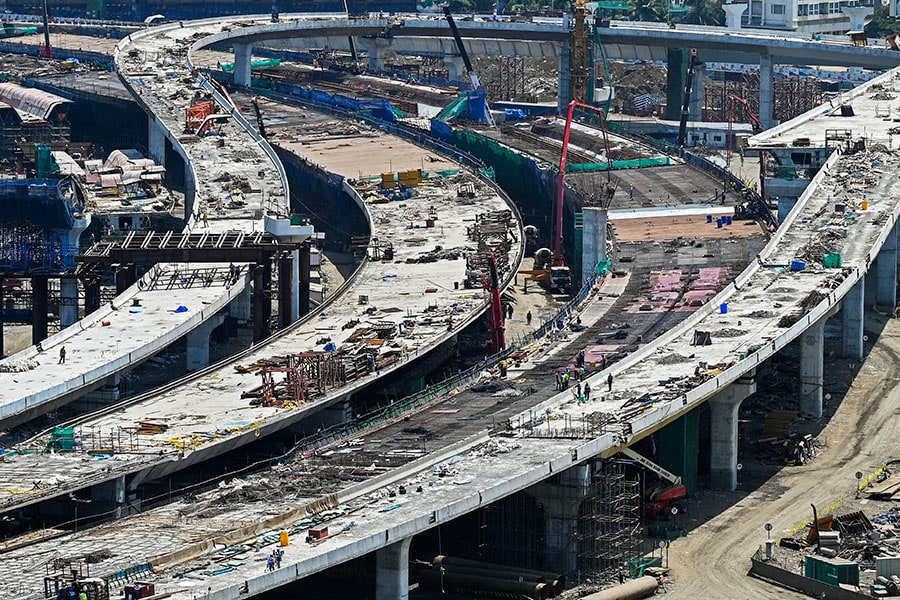
Budget 2024: With infrastructure in mind, the Modi government has upped India's capital expenditure outlay
It is pegged at Rs11.11 crore for the next fiscal, an 11.1 percent increase. The government has also allotted Rs2.78 lakh crore for the road ministry and Rs2.55 lakh crore to the Indian Railways
 File photo of the construction site at a coastal road project in Mumbai. Image: Punit PARANJPE / AFP
File photo of the construction site at a coastal road project in Mumbai. Image: Punit PARANJPE / AFP
There just seems to be no stopping the Modi government when it comes to infrastructure spending.
Last year, after announcing a massive 33 percent hike in capital expenditure to Rs10 lakh crore, Finance Minister Nirmala Sitharaman has now announced an 11 percent spike in capital infrastructure for the next fiscal. Capital expenditure outlay is now pegged at Rs11.11 crore for the next fiscal.
“Building on the massive tripling of the capital expenditure outlay in the past four years resulting in huge multiplier impact on economic growth and employment creation, the outlay for the next year is being increased by 11.1 percent to Rs11,11,111 crore,” said Sitharaman, who was presenting her last budget before India goes into elections this year. “This would be 3.4 percent of the GDP.”
Increased government spending, especially towards capital expenditure, often leads to job creation in addition to stimulating private consumption and investment spending. This year, the Modi government has allotted Rs2.78 lakh crore for the road ministry, up about 2.8 percent compared to last year, while another Rs2.55 lakh crore will be given to the Indian Railways.
Last year, Sitharaman had allocated Rs2.4 lakh crore towards Indian Railways which was some nine times higher than the amount in financial year 2013-14. Across Indian Railways, the government has announced that the funds will be used to create three major economic railway corridors. This includes one for energy, mineral and cement, another for port connectivity, and one for high-traffic density corridors, all in an attempt to decongest the railways and ensure faster movement.








